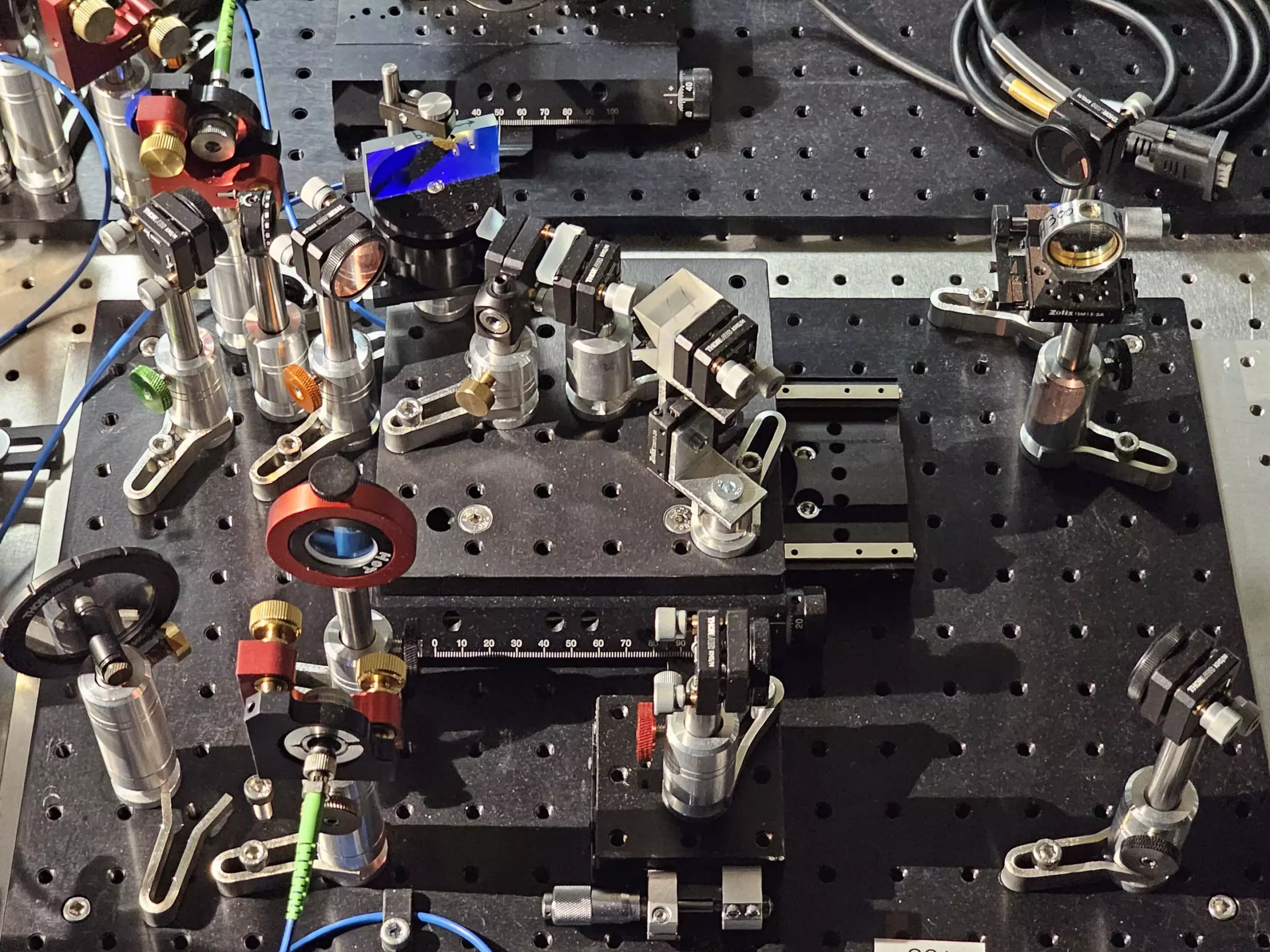The field of spectroscopy is essential in numerous scientific domains, encompassing the analysis of light’s spectral composition to identify various materials and celestial phenomena. Traditionally, spectroscopy has relied heavily on methods that may not capture the full breadth of information encoded in the electromagnetic field of light. Recent advancements in quantum-inspired technology have birthed a groundbreaking approach — the development of a super-resolving spectrometer by researchers at the University of Warsaw that aims to push the boundaries of conventional spectroscopy beyond its limits.
At its core, spectroscopy involves examining the unique fingerprint of light emitted or absorbed by chemical substances. The distinctive colors associated with these elements allow scientists to discern not only their chemical identities but also crucial astrophysical characteristics of distant stars. However, a recurring challenge in spectroscopy arises when multiple optical channels or wavelengths overlap. This overlap complicates the analysis, making it exceedingly difficult to differentiate between closely spaced channels — a phenomenon accurately described by the Rayleigh criterion established by Lord Rayleigh. This principle suggests that when channels are near one another, they become indistinguishable, ultimately hindering data transmission efficiency in optical networks.
The importance of solving this issue cannot be overstated; as fiber-optic communication continues to dominate global data transmission, enhancing our ability to resolve closely spaced channels will be vital for the future of secure quantum networks.
The innovative device, named Super-resolution of Ultrafast pulses via Spectral Inversion (SUSI), promises to transform traditional approaches to spectroscopy. The genius behind SUSI lies in its novel methodology of utilizing the phase information carried by light, which is often discarded in conventional imaging techniques. By adopting quantum-inspired principles, the researchers have crafted a spectrometer that takes advantage of the complex behavior of light to gain a clearer, more refined spectral analysis.
The operational framework of the SUSI device draws parallels with super-resolved imaging techniques. In practice, the light emitted by the target is funneled into an interferometer, which divides the light into two distinct pathways. One of these paths undergoes a phase inversion while the other maintains its original trajectory. This alteration enables the SUSI to exploit any minute differences in photon behavior when the position or properties of the light source is altered. For instance, if we imagine two light emitters spaced evenly across the inversion axis, slight movements will yield discernible changes in photon counts, significantly enhancing measurement precision over standard methods.
One of the primary hurdles in advancing the SUSI technology was conceptualizing the implementation of frequency inversion within the context of time-domain spectroscopy. By realizing that traditional Fourier Transform techniques could effectively replace a direct inversion in one arm of the interferometer, the researchers established a new path forward. This balanced design not only minimized losses across both arms of the interferometer but also allowed for seamless integration on a photonic chip — paving the way for miniaturization of the technology.
The design principle emerged as a pivotal breakthrough for the research team, comprising Ph.D. student Michał Lipka and Dr. Michał Parniak, who managed to marry theoretical concepts with practical application. The efficiency and scalability of the SUSI device represent a significant step toward contemporary optical and quantum networks, informing future development in super-spectrometers.
As the research team detailed in their publication in the journal Optica, the promise of the SUSI spectrometer extends far beyond academia. The potential to integrate SUSI technology with existing photonic infrastructures could lead to significant advancements in diverse fields, from telecommunications to biomedical diagnostics. With the looming need for secure data transfer methods, optical networks that employ this super-resolving technology could form the backbone of future quantum networks, significantly optimizing their performance.
Moreover, the enhancement of spectroscopic capabilities will be critical in many industries, enhancing material analysis and astrophysical research, among others. Through the power of quantum-inspired design, the SUSI device heralds a new era in the realm of light analysis, illustrating how interdisciplinary approaches can surmount traditional limitations and unlock a wealth of information previously thought to be unattainable.
The collaboration from the University of Warsaw has sparked a transformative evolution in spectroscopy. By leveraging quantum principles, the SUSI super-resolving spectrometer offers unprecedented levels of precision in spectral analysis, promising to redefine our approach to both existing and future technologies. As this technology moves towards practical application, its implications are vast, heralding a promising horizon for spectroscopy and optical communications alike. The potential of SUSI to integrate within photonic chips could very well shape the future landscapes of optical networks and quantum technology, making it an exciting frontier in scientific exploration.


Leave a Reply